Music of the Subcontinent
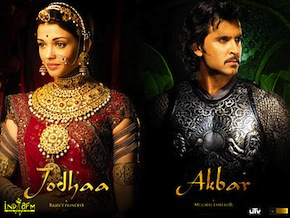 The Asian Art Museum’s new exhibit, Maharaja: the Splendor of India’s Royal Courts, is a fine focal point for the music of India, Pakistan, and Bangladesh in the Bay Area — an important subject not coming up all that often in a local context.
The Asian Art Museum’s new exhibit, Maharaja: the Splendor of India’s Royal Courts, is a fine focal point for the music of India, Pakistan, and Bangladesh in the Bay Area — an important subject not coming up all that often in a local context.
To make up for that, here’s a triptych: a personal — and admittedly quirky — report about the best of Bollywood film scores, a look at our vital cultural connections, and a list of some exhibit-related events.
With ‘Khwaja Mere Khawaja,’ Against the World
Suggest starting with the video, even before reading about it. Then check out “Azeem-O-Shaan-Shahenshah,” with India’s finest Wagner tubas. The deeply Moslem background? If you have no problem with Bach grounded in Christianity, the presence of Mecca against this music should be just fine.
The business about this popular (but not pop) music came up last week, though it’s been an interest of mine for years. After a couple of surprising exchanges at last week’s opening of Maharaja about a snippet from the Bollywood film Jodhaa Akbar shown in the exhibit, I conducted a scientific survey.
It consisted of asking Qamar Adamjee, the local curator, V&A curator Anna Jackson (whose charming title is “Keeper, Asian Department”), an attending Indian Princess (royalty in a republic?), and such, with the following result: Jodhaa Akbar is much disliked on the subcontinent, especially by those (such as the ones mentioned here) who haven’t seen it.

Well, I have, and I can say with certainty that it’s a pretty good Bollywood flick. The problem may be with feelings about the protagonist, Jalal ud-Din Muhammad Akbar, the third Mughal Emperor, and apparently a great ruler who wasn’t considered as such by some of the inevitably oppressed, and their descendants.
The reason Jodhaa Akbar sticks in my mind (unlike dozens of others Bollywoodians) is “Khwaja Mere Khawaja,” a hypnotic and ecstatic Sufi song by — surprise! — A.R. Rahman, India’s answer to Andrew Lloyd Webber in commercial success, though of more substance and variety.
Sufi and qawwali are birds of a feather, and “Khwaja Mere Khawaja” is a mild-mannered introduction to my favorite Nusrat Fateh Ali Khan, and the whole ecstatic qawwali literature.
Maharajas and the Bay Area
When the Beatles’ George Harrison embraced Indian culture and Hinduism in the mid-1960s, he and Ravi Shankar became, well, instrumental in expanding Western awareness of Indian classical music and spirituality.
Harrison followed the 1971 Concert for Bangladesh with a world tour. A milestone in that campaign was a legendary concert in Marin’s Ali Akbar College of Music, the school founded and headed by Ali Akbar Khan, known by the honorific Khansahib.
The great sarod virtuoso, who died two years ago, at age 87, bridged the American present with the past age of the Indian maharajas. He and his revered father, Allauddin Khan, had been at the center of Hindustani classical music for over a century, and both served in princely courts of maharajas.
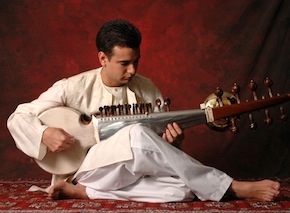
For half a century, Khansahib’s concerts around the Bay, his hundreds of students, and the ongoing school in Marin — led by his sons — have been a prime example of the presence of Indian culture in the city now hosting the Maharaja exhibit.
A new film biography of Khansahib, narrated by his son, Alam, is being shown at the ninth annual San Francisco International South Asian Film Festival, “3rd I,” taking place Nov. 9–13. Play Like a Lion, which premiered a couple of weeks ago at the Mill Valley Film Festival, is screening in the Roxie at 4:30 p.m., Nov. 13.
California has more than 4 million residents of Asian descent, including some 300,000 of Indian subcontinental heritage — present-day India, Pakistan, and Bangladesh. Their influence has permeated every aspect of society, from music to food, from yoga and meditation classes to technology.
Offspring of this ancient civilization have been in the vanguard of the 20th-century miracle of Silicon Valley. Vinod Khosla is cofounder of Sun Microsystems and investor in dozens of startups; Gururaj Deshpande launched Sycamore Networks; Suhas Patil started Cirrus Logic; Prabhu Goel founded Gateway Design; Kanwal Rekhi started and ran Excelan until it merged with Novell — only a smattering of the thousands of entrepreneurs, investors, engineers, and customer support workers from the subcontinent in and around the Valley.
A recent study found that immigrants account for one-third of the scientific and engineering workforce in Silicon Valley, while Indian and Chinese chief executives are running one-fourth of the high-technology firms in the region.
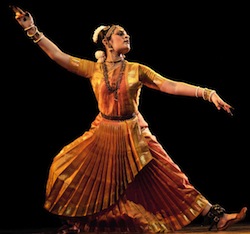
According to Fortune magazine, “Bay Area Indian immigrants represent America’s most successful immigrant group. Collectively, they’ve created companies that account for $235 billion of market value.”
Partially as a result of this influx, Indo-Pakistani restaurants in the San Francisco–San Jose corridor now number in the hundreds. From simple curry diners to vegetarian places in strip malls to specialty houses such as Dosa, and the prize-winning restaurants Asoka, Mehfil, Indian Oven, and Gaylord, choices are mouthwatering and many.
The region is also home to dozens of Indian cultural organizations, serving Bengali, Goan, Gujarati, Sindhi, Tamil, Punjabi, and other communities.
Besides the world-renowned Ali Akbar College of Music, the Chitresh Das and Abhinaya dance companies, as well as Bal Bharati, Chhandam, Kalanjali, Prabhath Academy, and other schools, all operate here successfully.
Events
A few programs and events from the vast store of entertainment around the Maharaja exhibit, in the Asian Art Museum:
India Comes Alive with Music, Dance, and Art
Art and dance teachers from the Indian Community Center in Milpitas introduce India’s cultural festivals, dance traditions, and traditional art activities. [Nov. 18–20; Dec. 16–18; Feb. 17–19; March 16–18/noon to 4 p.m./free with museum admission]
Family Fun Activity: Dance!
Hip-hop, funk, and reggae songs are the soundtracks for contemporary forms of Bhangra dance. In this workshop for tweens, learn to dance Bhangra like a Bollywood star. [Dec. 29/1–¬3 p.m./members free, nonmembers $2 per person/suggested for children 10–13]
South Indian Music and Dance
Carnatic violinist A. Kanyakumari performs with percussionist Pathri Satish Kumar and violinist Nishant Chandran, and featuring bharatanatyam dancer Pallavi Sriram. Copresented with Pallavita. [Nov. 6/11 a.m. and 2 p.m./a Target First Free Sunday Program]
South Indian (Carnatic) Music
The Sri Lalitha Gana Vidyalaya School youth musicians present two concerts of Carnatic music. Sing along with the students at the morning performance. [Dec. 3/11 a.m. and 2 p.m./a Target First Free Sunday Program]
North Indian Dance The Chitresh Das Dance Company performs Kathak dance. Instruction and participation for children ages 3–5 at the morning performance. [March 4/11 a.m. and 2 p.m./a Target First Free Sunday Program]
Indian Sitar Maestro Ashwin Batish and Family
A demonstration of Indian sitar (plucked stringed instrument) and tabla (drum) music, with repertoire ranging from classical to fusion. [March 23–25/noon–4 p.m./free with museum admission]
South Indian Dance (Bharatanatyam)
The famed Abhinaya Dance Company performs Bharatanatyam dance. The morning performance includes instruction and participation for children ages 3–5. [April 1/11 a.m. and 2 p.m./a Target First Free Sunday Program]
Screenings
- Films for Kids, Dec. 11: “Chandani: Daughter of the Elephant Whisperer,” 2010 (11:30 a.m.); “Like Stars on Earth,” 2007 (2:30 p.m.)
- Films for Lovers, Jan. 8: “Umraojan,” 1982 (11:30 am); “The Greatest of the Mughals,” 1960 (2:30 p.m.)
Make Your Piece with G&S Via the Lamplighters
 Savoyards and Gilbert & Sullivan fans everywhere are all up in arms about PBS’ — ahem — “controversial” production of HMS Pinafore. Time, then, to turn to our own tried-and-true Lamplighters Music Theatre.
Savoyards and Gilbert & Sullivan fans everywhere are all up in arms about PBS’ — ahem — “controversial” production of HMS Pinafore. Time, then, to turn to our own tried-and-true Lamplighters Music Theatre.
The good company is getting ready for its 46th annual Champagne Gala & Auction, called “It’s a Mad, Mad, Mad, Mad, Amazing Race Around the World in 79½ Days” (carefully navigating around copyrights and such). Just in time for tea, the Nov. 6 show in Herbst Theatre will start at 4 p.m. Subtitled “If It’s Tuesday, This Must Be Basingstoke,” the show brings G&S and their contemporaries to life, including Charles Dickens, Jane Austen, Mary Shelley, and Robert Louis Stevenson.
As always, the annual treat features original lyrics set to the music of, mostly, Sir Arthur Sullivan, performed by many of your favorite Lamplighter singers. Silent auction information is available before the show; after the show, the audience is invited to join the costumed cast and crew in the Green Room for a champagne party.
Beyond the Verdi Requiem Scenes with Chorus Master Bohlin
Ragnar Bohlin’s San Francisco Symphony Chorus was exceptionally brilliant in last week’s performances — four in four days! — of the Verdi Requiem. Music News did some due diligence on what else the unmelancholy Swede is up to.- Bohlin is also on the S.F. Conservatory faculty, where he presents concerts with the Conservatory Chamber Choir, a 20–25 voice ensemble, which puts on usually three programs each season.
- Members of the Chamber Choir will appear on Nicole Paiement’s upcoming Philippe Hersant program on Nov. 19, including Aus Tiefer Not, a setting of Psalm 130 “De Profundis Clamavi” (Out of the depths I cried to thee, O Lord). This is the same night when SFS performs the Brahms Requiem, so Bohlin is double-booked.
- In an attempt to build the performing chops of his chamber choir, Bohlin has created a mini-touring schedule for each program set that includes additional performances in Berkeley, at All Souls Church, near his home, and at All Saints Episcopal Church in Palo Alto, whose music program is run by Conservatory faculty organist Rodney Gerhke.
- In his spare time, Bohlin made his debut with the Sao Paulo Symphony and Chorus (Brazil) in Arvo Pärt’s Te Deum and Bach’s Magnificat. In November he will make his debut with the Malmo Symphony (Sweden) with Verdi’s Requiem.
- In preparation for his own conducting of the Verdi Requiem in Sweden next month, Bohlin has been working closely with conductor James Conlon. He said Conlon gave him “invaluable insight into the interpretive detail of the work, noted printing errors in published scores he has gleaned from original manuscript research, and offered choice vignettes from Verdi’s life.” When Bohlin asked Conlon what he owed him for so much generosity, Conlon suggested “to buy me a beer sometime.”
Vivaldi Celebrated at San Domenico
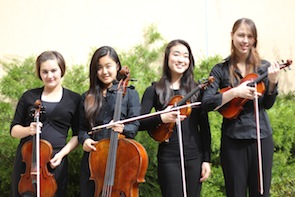
San Domenico School’s traditional and always brilliant Virtuoso Program celebration of Vivaldi (who himself had a music school for girls, some 300 years ago) featured a battle of the school’s quartets, all happily uniting — under the baton of Ann Krinitsky — in the Orchestra da Camera. That’s the band that won national championships in 2005, 2008, and 2010.
The Ravel Quartet played the first movement from Borodin’s String Quartet No. 2; other quartets presented the second movement from the Ravel String Quartet, and the Finale from Dvořák’s American String Quartet.
The orchestra offered Vivaldi’s Concerto in D Major F. XI, No. 42, and Elgar’s Introduction and Allegro for Strings, Op. 47.
The school’s next concerts include the Fall Solo Recital (Nov. 7), Winter Chamber Music (Dec. 5), Winter Solo Recital (Feb. 15), and “Women in Music” benefit concert (March 11).
Symphony Youth Orchestra, SFS Offspring in Concert
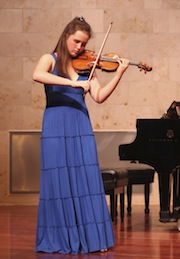 Another notable young product of the San Francisco Symphony family, Alina Ming Kobialka, will be the soloist at the SFS Youth Orchestra’s Nov. 6 concert at Davies Symphony Hall.
Another notable young product of the San Francisco Symphony family, Alina Ming Kobialka, will be the soloist at the SFS Youth Orchestra’s Nov. 6 concert at Davies Symphony Hall.
The winner of the Youth Orchestra Concerto Competition, Alina is featured in the Tchaikovsky Violin Concerto. The program, conducted by Donato Cabrera, includes three dances from Falla’s Three-Cornered Hat and Prokofiev’s Symphony No. 5 (just heard on Sunday in an unusually dense performance at the Los Angeles Philharmonic concert).
There are those who — with much justification — object to using first names for young women, but in the context of this report, it’s necessary, so with apologies, here it goes. Alina, who is also associate concertmaster of the Youth Orchestra, is the daughter of Daniel Kobialka, former SFS principal second violinist 1975–2008), and of SFS violinist Chunming Mo.
Alina began her studies at the age of 5, studied with Li Lin, and is currently studying with Wei He at the San Francisco Conservatory of Music. At the age of 6, she was awarded first prize in the Chinese Music Teachers Association of Northern California Competition. At 10, she was guest soloist with the Diablo Valley College Philharmonic, and when she was 12 she was guest soloist with the Oakland Civic Orchestra. Last year, she made her concerto debut with the Symphony Parnassus, conducted by Stephen Paulson, playing the Barber Violin Concerto in Herbst Theatre.
Other SFS family “products” that Classical Voice has long heralded: violinist Mayumi Wyrick and cellist Mariko Wyrick, daughters of SFS cellist Peter Wyrick and violinist Amy Hiraga.
There must be other musical prodigies of SFS musicians, and information about them would be welcomed by this family-conscious column.
Bolshoi's First American Dancer in Sleeping Beauty
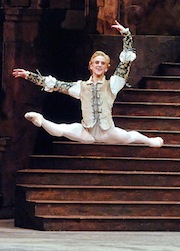
Fathom Events, which has been facilitating HD telecasts of music and dance events from around the world to show in neighborhood theaters, is teaming up with Emerging Pictures to present The Sleeping Beauty (Nov. 20) and Esmeralda (Nov. 30) from Moscow’s Bolshoi Ballet.
The Sleeping Beauty marks the Bolshoi debut of South Dakota native (and Lady Gaga fan) David Hallberg, the first American dancer in history to join the Russian company as a principal dancer. That’s an event perhaps even more striking than an American winning the Tchaikovsky Contest in Moscow. True, Harvey Lavan “Van” Cliburn Jr. did that in 1958, in a world wholly different from that of today’s global society.
Participating theater groups now include AMC Entertainment Inc., Cinemark Holdings, and Regal Entertainment — in addition to some 300 screens that are already part of the Emerging Pictures Network. Fathom is responsible for distribution of such programs as the “Met: Live in HD” series and “LA Phil LIVE” with Gustavo Dudamel from Walt Disney Concert Hall.
Tickets to the Bolshoi events go on sale on Oct. 28.
The next Metropolitan Opera live HD telecast is on Oct. 29, of Mozart’s Don Giovanni.
Among participating local theaters: Cinearts Empire 3 and Century 9 (San Francisco), Daly City 20, and AMC Bay Street 16 (Emeryville).
International Auditions For San Francisco Ballet School
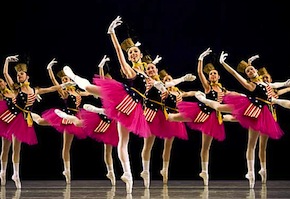
Seventy-five years young and the country’s oldest, San Francisco Ballet School is making a great leap forward, according to an announcement Monday. Although bypassing North Dakota (see item above), SFB School is embarking on a three-month-long first-ever international audition tour.
Hundreds of teenage boys and girls in the U.S. and Europe will have a chance to audition for invitations to attend intermediate and advanced programs next summer. Beginning in December, auditioning teachers from San Francisco will be in London, Madrid, Marseille, and Florence, before crisscrossing the country, holding auditions in 11 U.S. cities ranging from right here in river city (aka San Francisco) to Chicago, Boston, New York, Boca Raton, and elsewhere.
“There are many talented young dancers throughout Europe who are well-suited to participate in our training programs,” says Lola de Avila, associate director of the San Francisco Ballet School. “We are thrilled to hold international auditions, offering prospective students the chance to receive the highest-caliber training.”
Some 1,500 teenage dancers are expected to audition for about 125 positions for each of the School’s Summer Session programs. The school trains about 350 dancers annually. In addition to filling the ranks of San Francisco Ballet, graduates have gone on to join distinguished ballet companies throughout the world.
'New Voices' Competition on Medici.tv
The final round of the International Singing Competition (Neue Stimmen 2011) is now available on Medici.tv. It was filmed Saturday night in Gütersloh, Germany.Among the first-prize winners of past competitions were René Pape, Nathalie Stutzmann, Angelika Kirchschlager, and Maxim Mironov. This year, the winner is Olga Bezsmertna, singing “Depuis le jour” from Charpentier’s Louise.
The six finalists, ages 21 to 28, come from China, Russia, Romania, South Korea, Slovakia, and Ukraine.
S.F. Girls Chorus Opens the Season
Still led by Artistic Director Susan McMane, whose contract was not renewed, the San Francisco Girls Chorus opens the 2011–2012 season with the participation of the KITKA Women’s Vocal Ensemble in San Francisco (Nov. 4) and Berkeley (Nov. 6).Following its successful Cuban tour and selection as the first-ever U.S. finalist in Britain’s BBC choral competition “Let the Peoples Sing,” the five-time Grammy Award–winning chorus opens its 33rd annual concert season with “Rural Inspirations.” The performances in both locations feature music by Kodály (Hegyi Éjszakák, No. 2 (Mountain nights), Bartók (Cipósütés), Mellnäs (Aglepta), Tormis (Lauliku lapsepõli), and other Eastern European composers.
Time Flies, the Bridge Stands
 Seems not long ago that we celebrated the Golden Bridge’s 50th anniversary — by the scary flattening of the span as 800,000 people (more than the city’s entire population) squeezed onto it. Surprise! The bridge is approaching its 75th birthday, and preparations are in the making to mark the day, preferably not by jeopardizing its infrastructure.
Seems not long ago that we celebrated the Golden Bridge’s 50th anniversary — by the scary flattening of the span as 800,000 people (more than the city’s entire population) squeezed onto it. Surprise! The bridge is approaching its 75th birthday, and preparations are in the making to mark the day, preferably not by jeopardizing its infrastructure.
Elaine Robertson, who holds a plethora of music jobs around the Bay, is managing a competition for new scores to be part of the celebrations.
Robertson’s International Orange Chorale announces a composer competition and call for scores to celebrate the 75th anniversary of the bridge by performances at the Golden Gate National Parks Conservancy’s Golden Gate Bridge Waterfront Celebration next May. The deadline for submitting scores is Dec. 31 — leaving little time for completing the work.
The competition is for a cappella chamber choir of 32 voices, and a work running no longer than five minutes. The work must set text or poetry related to the Golden Gate Bridge and its surroundings.
